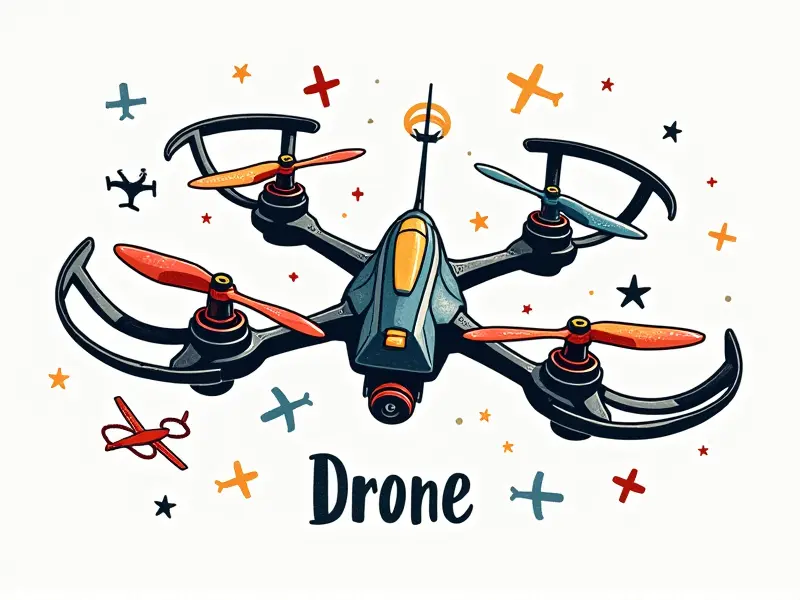How do drones navigate?

Drones have become indispensable tools in various industries, from agriculture and construction to aerial photography and delivery services. One of the most critical aspects that make drones effective is their navigation capabilities. Understanding how drones navigate involves exploring several key technologies such as GPS, autonomous flight paths, sensor fusion, waypoints, obstacle avoidance, RTK precision, indoor navigation, visual navigation, drone autopilot systems, advanced algorithms, and techniques for navigating without GPS.
Understanding GPS in Drone Navigation
The Global Positioning System (GPS) is a cornerstone of drone navigation. GPS satellites transmit signals to drones equipped with receivers, allowing them to calculate their precise location on Earth. This system provides real-time positioning and velocity data that enables drones to maintain stability and follow predetermined routes accurately.
Autonomous Flight Paths Explained
Autonomous flight paths are pre-programmed trajectories that drones can follow without direct human intervention. These paths are defined by waypoints, which specify exact coordinates for the drone to visit during its mission. Autonomous flight paths enhance efficiency and safety in various applications such as surveying large areas or delivering packages.
Sensor Fusion for Accurate Drone Guidance
Drone navigation often relies on sensor fusion, a technique that combines data from multiple sensors like GPS, accelerometers, gyroscopes, and barometric pressure sensors. By integrating these diverse inputs, drones can achieve highly accurate position estimates even in challenging environments where GPS signals may be weak or unavailable.
Waypoints and Routes: Drone Navigational Basics
Waypoints are specific geographical points that serve as reference markers for drone navigation. They define the start, end, and intermediate locations of a flight path. Creating effective routes involves planning these waypoints to ensure optimal coverage and efficiency.
Obstacle Avoidance Techniques in Drones
To navigate safely through complex environments, drones employ sophisticated obstacle avoidance techniques. These include using LIDAR (Light Detection and Ranging), ultrasonic sensors, and computer vision algorithms that detect and avoid obstacles in real time. This capability is crucial for applications like inspection of infrastructure or search-and-rescue missions.
Real-Time Kinematic (RTK) Precision in Drones
RTK technology enhances GPS accuracy by correcting signal delays caused by the ionosphere and troposphere. RTK-equipped drones can achieve centimeter-level precision, making them ideal for applications requiring high positional accuracy such as precision agriculture or construction site monitoring.
How Drones Navigate Indoors and Outdoors
Navigating indoors poses unique challenges due to limited GPS coverage. For indoor navigation, drones rely on alternative technologies like SLAM (Simultaneous Localization And Mapping), which uses visual odometry and feature recognition to map the environment in real time.
GPS vs. Visual Navigation in Drones
While GPS is essential for outdoor navigation, visual navigation becomes crucial indoors or in areas with poor satellite coverage. Visual navigation leverages cameras and image processing algorithms to estimate position based on environmental features, providing a robust solution for indoor flight.
Understanding Drone Autopilot Systems
An autopilot system manages all aspects of drone operation from takeoff to landing, including route planning, obstacle avoidance, and stability control. Advanced autopilots incorporate machine learning algorithms that continuously improve navigation performance based on real-world data.
Advanced Algorithms for Drone Guidance
Algorithms play a vital role in optimizing drone flight paths and ensuring safe operation. Techniques such as path-planning algorithms calculate the most efficient routes, while collision avoidance algorithms predict potential hazards and adjust flight trajectories accordingly.
Navigating Without GPS: Drone Techniques
In situations where GPS is unavailable or unreliable, drones must rely on alternative navigation methods. These include dead reckoning (using previous position data), magnetic field sensors, and inertial measurement units (IMUs) that track changes in velocity and orientation.
Conclusion
The ability of drones to navigate autonomously has revolutionized numerous industries by improving efficiency, safety, and accuracy. From utilizing GPS for precise outdoor positioning to employing advanced sensor fusion and visual navigation techniques indoors, the technology behind drone guidance is constantly evolving. As research continues to advance, we can expect even more sophisticated capabilities that will further expand the potential applications of drones in our daily lives.

